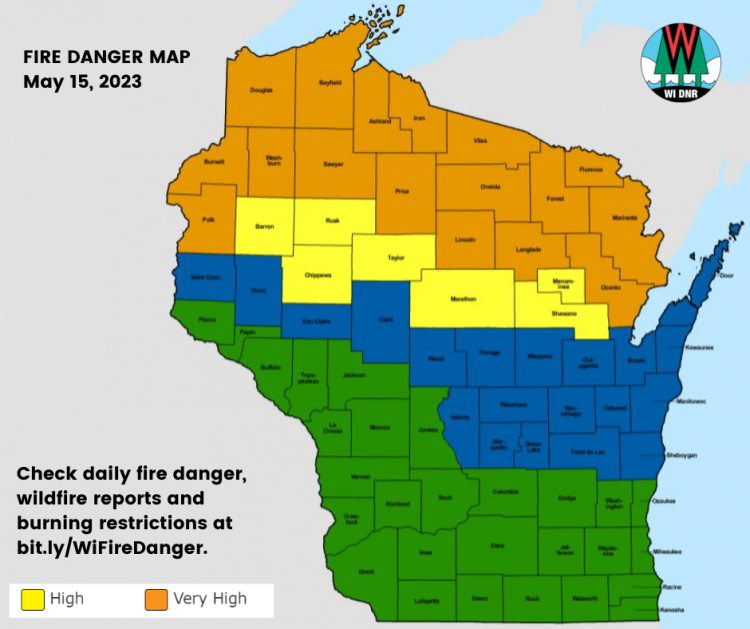Critical fire danger is high across much of the state


The Wisconsin DNR is asking the public to avoid burning, because of critical fire danger across northern Wisconsin.
Areas with HIGH fire danger include Chippewa, R...


The Wisconsin DNR is asking the public to avoid burning, because of critical fire danger across northern Wisconsin.
Areas with HIGH fire danger include Chippewa, R...